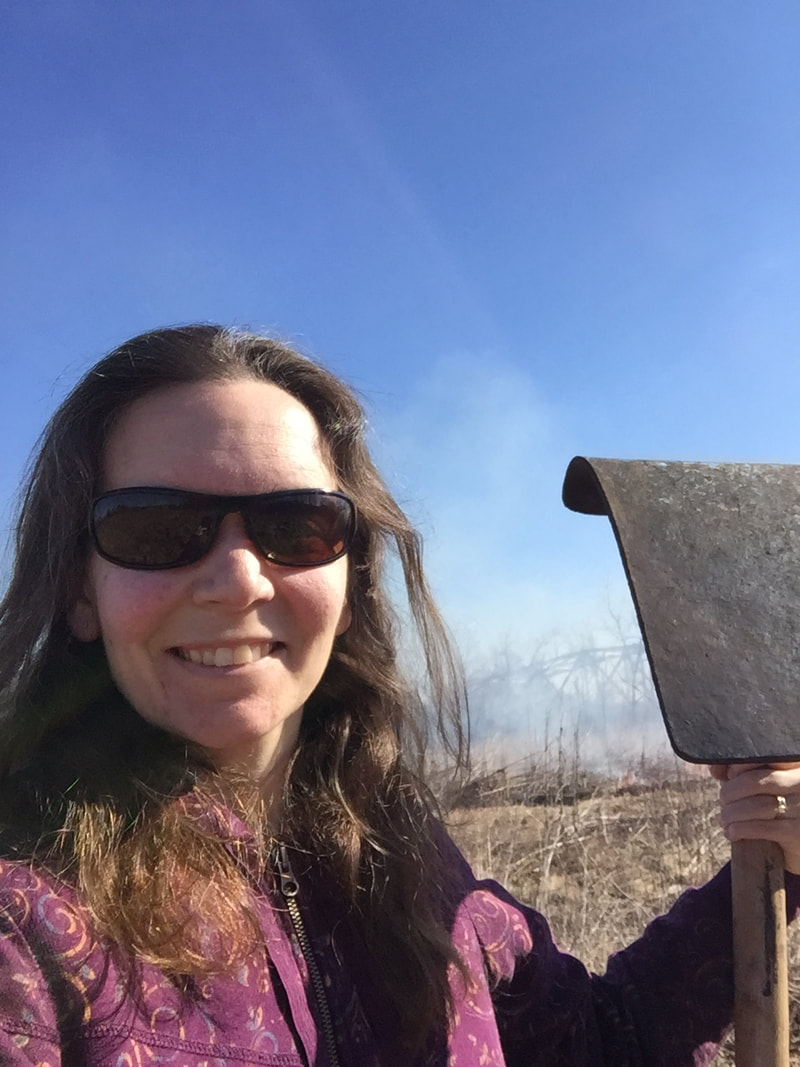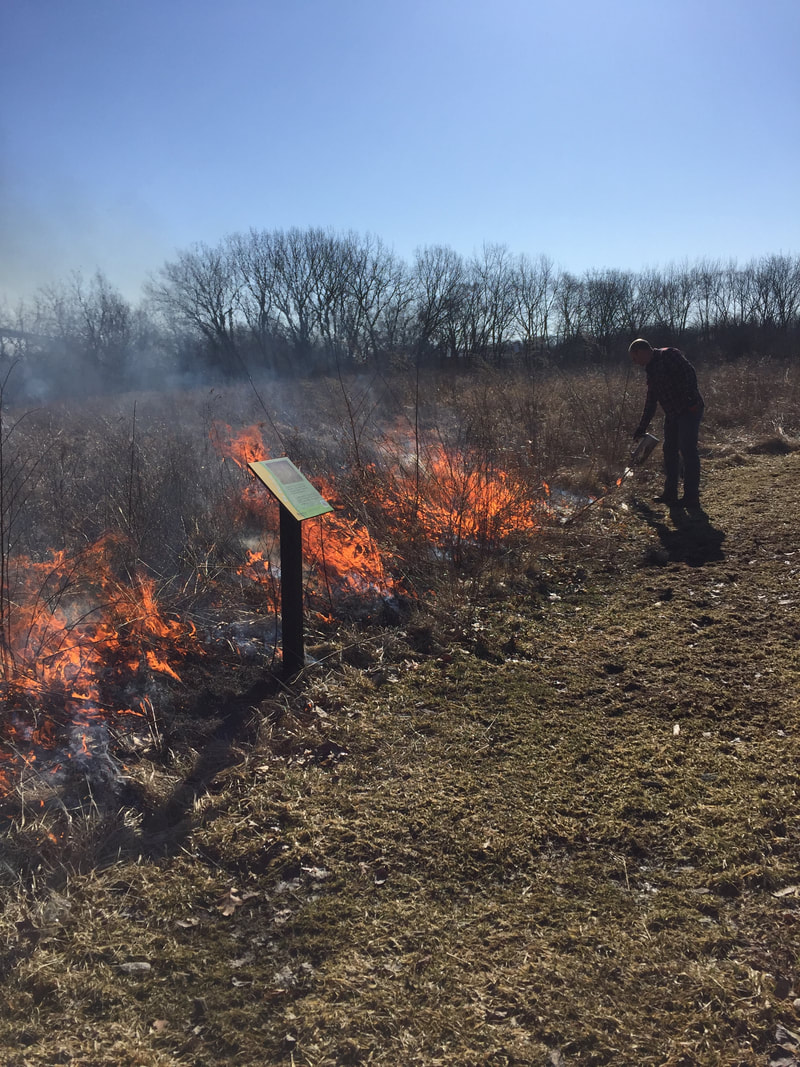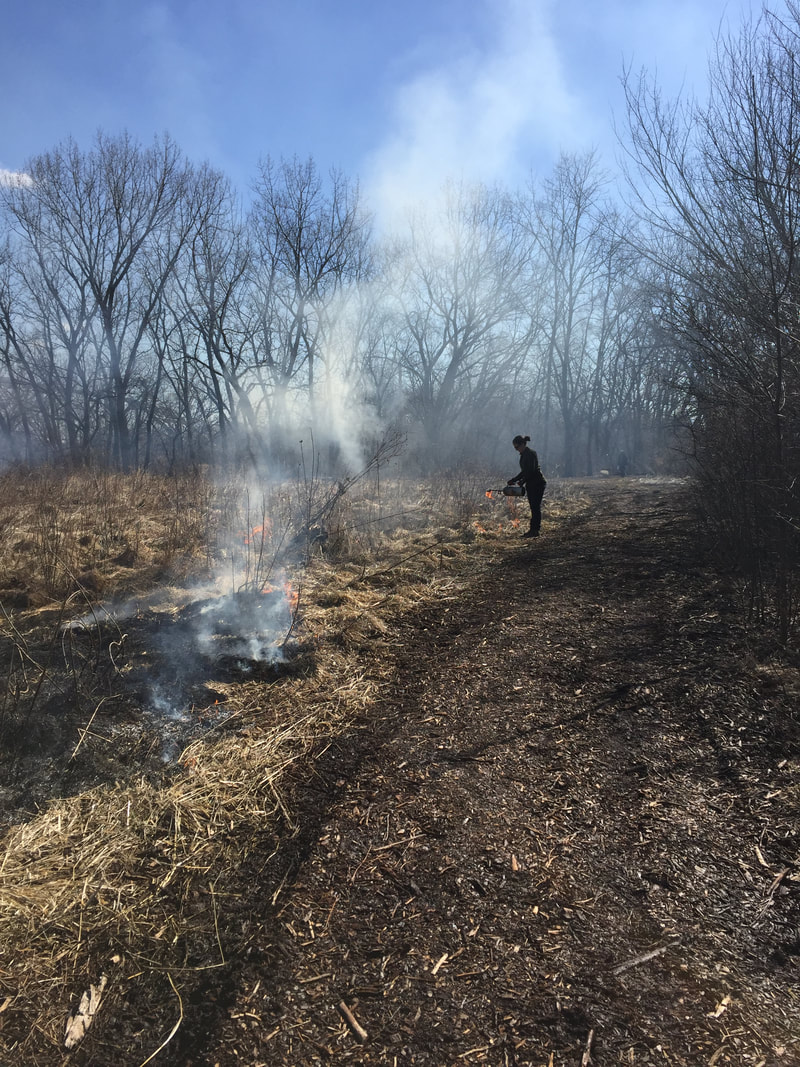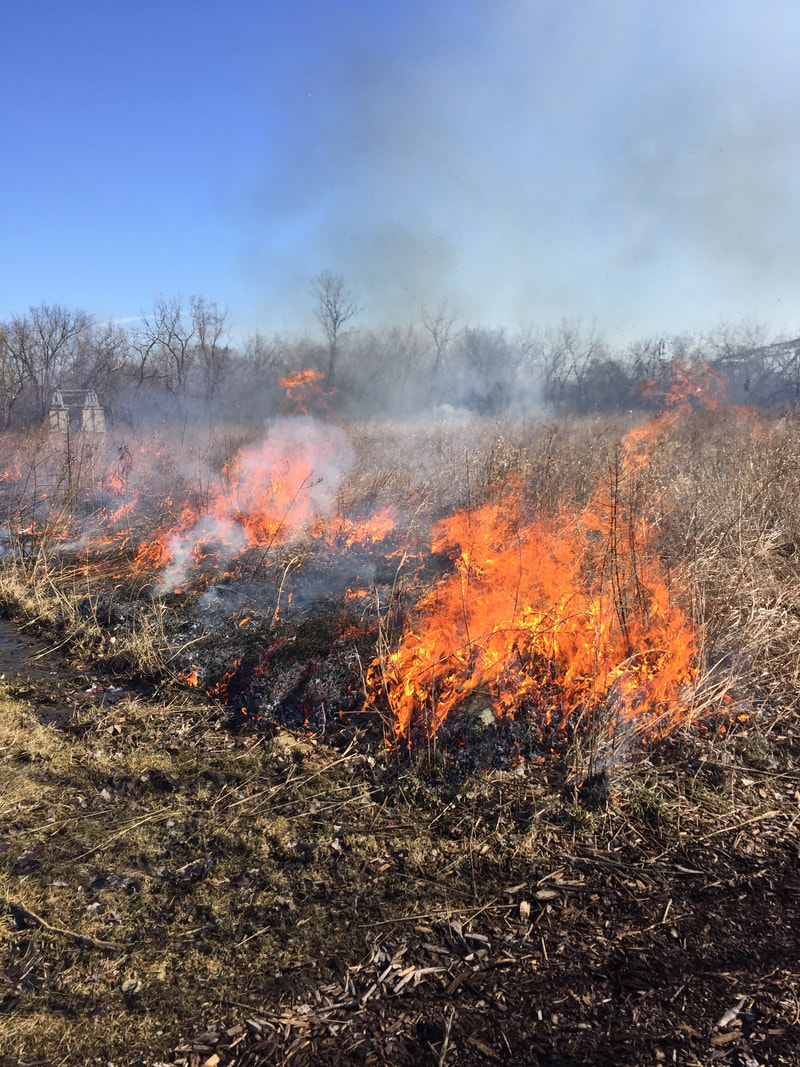|
.Our crew of five gathered around the edge of the prairie on a pleasant March morning, wielding tools both to start and to fight fire. In the shade of the trees, frost still lingered on the dry grasses and plant stalks that would serve as fuel for the fire, so we made our way around to another section of the prairie to begin the burn. A drip torch provided the fire to get things going, and I stood by with my fire-swatter to stamp out any fire going where it wasn't supposed to go.
Controlled burns have become a key management tool for many ecosystems in the Midwest. I had always wanted to watch or assist with a controlled fire, but this spring was my first chance to do so. This controlled burn was at Lake Katherine in their Buzz 'n' Bloom prairie. The trails around the prairie served as fire breaks, and we closely monitored the fire. However, with the damp ground and effective fire breaks, there wasn't too much cause for me to use my fire swatter. I really only used it once to keep the fire back from a compost area of the neighboring heritage garden. Prairies, oak savannas, and even many of our local forests have fire-adapted species. In the case of prairie plants, their deep roots and growth points tucked down low allow them to recover quickly from fire. Fire also helps promote a diversity of native species and reduces the prevalence of invasive species in these habitats. If you are driving along the forest preserves this spring (or later in the fall) you might see their burn crews at work, as prescribed fire is a key management tool used in the preserves as well. Obviously, fire must be used with care, but it's an important part of conserving native species and landscapes in our region. What looks black and charred today will soon show the evidence of a flourishing ecosystem, with leaves emerging and flower buds forming.
0 Comments
Leave a Reply. |
Abbie SchrotenboerI'm a biology professor at Trinity Christian College. I'll be using this page to share interesting stories related to ecology and conservation at Trinity and in the Chicago area (although I might be tempted to expand my geographic focus upon occasion). Archives
December 2020
Categories |




 RSS Feed
RSS Feed
